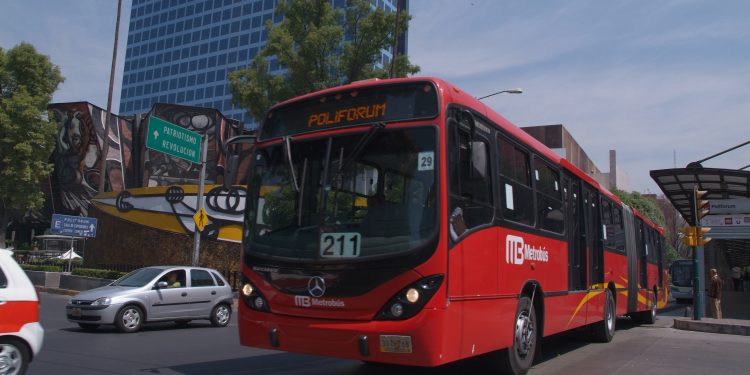The most efficient public transport system in Mexico City is the Metro, with 4.4 million people traveling along its 11 lines on an average weekday. But the Metro doesn’t quite go everywhere, and so it’s fed every day by a veritable army of micros, half-sized buses that cover the city, delivering commuters by the thousands to Metro terminals.
Cheap and cheerful is probably the best way to describe the much maligned but essential micros. Their quality varies considerably; some are relatively new, almost comfortable with interior lights working properly and adequate leg-room between the seats for medium-sized people. Others are not much more than crates on wheels, where standing is easier than sitting and the noise of the traffic is drowned out by the rattling of seats and window frames.
And then there are the radios. Most of the micros have their radios on, tuned to the station of the driver’s choice. That could mean any one of a dozen news programs, Mexican ranchero music, pop, rock, golden oldies, cumbias. Very rarely, and that too often, heavy metal is blared through speakers by some youth who doesn’t so much assume that people can stand it as not care.
The average micro has seating room for 18 to 22 people; standing room, however, is very flexible. A trip at rush hour could find you among the travelers crammed into the aisle, pretending not to hear the driver’s requests that people move toward the back “in double rows” to enable others to cram on. After moving to the back a few times, you will understand why so many passengers ignore these requests. Once standing by the back doors, inevitably blocking the exit, you will find yourself moving left and right, or back and forth, every time someone gets off. People generally won’t just ask you to let them through, they’ll ask you if you’re getting off at the next stop. It’s not that they’re nosy, they just don’t want you to think they’re trying to push in. You may also be asked to ring the bell, or pass fares along to the driver from those who’ve jumped in the back door of a particularly crowded micro.
They’re the scourge of the city, drivers will tell you. The only way to get to the Metro, say those using public transport. Signs inside the micros are quite clear that passengers must alight by the back doors, and that there is no stop just after the traffic light crossing. But don’t be surprised when a passenger asks the driver if he’ll let them off just after the junction, and hops out the front door. Drivers won’t always stop just where the passenger wants, occasionally going one or two blocks further to the cry of “I’m not going to your house” from a disgruntled commuter who then hops off muttering about something or other. The driver will possibly answer back that it’s not door-to-door service as he negotiates pulling out into traffic to further abuse from the horns of cars whose single occupants consider their right to advance in heavy traffic is about to be infringed on.
Some people still refer to the micros as peseros or colectivos after their predecessors, which were taxis that ran along fixed routes picking people up and dropping them off anywhere along the route. They were called peseros because they cost a peso, at least at one time, and colectivos because, guess, they were collective taxis. Drivers would stick their hand out of the window displaying as many fingers as places available inside the car. As the city grew, these were gradually replaced by minibuses, the Volkswagen Combis which could seat up to 11 passengers at a squeeze. But even the Combis couldn’t keep up and so the micro came into being. The next logical step is clearly from micros to full-size buses. There are already a lot of these, but as the number of micros shows, not nearly enough.
See Also: Transport in Mexico
Mexico in your inbox
Our free newsletter about Mexico brings you a monthly round-up of recently published stories and opportunities, as well as gems from our archives.

